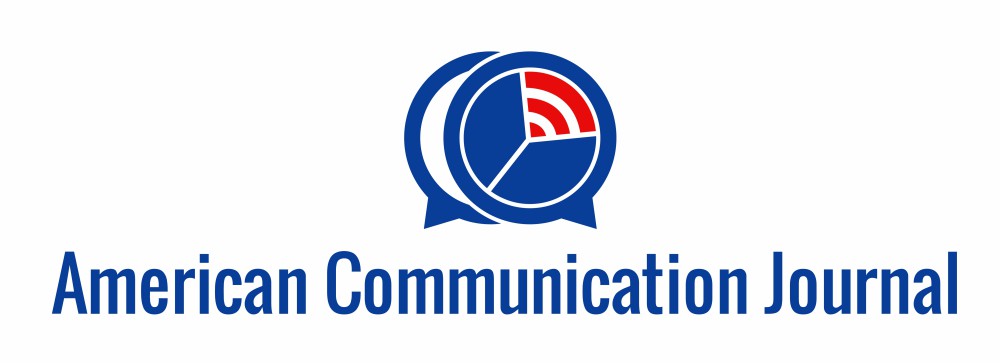Aziz Douai, Associate Editor
“Connections in Communication”
The 2011 Spring issue of the American Communication Journal (ACJ) features material that reconnects diverse strands of communication scholarship. The Editors have grouped the material under the theme of “Connections in Communication.” This ad-hoc theme bridges the myriad ways in which we view communication’s role in society, as a critical enterprise and social change catalyst. The latest ACJ issue is published during a time where social media and other new means of communication have been catapulted into the sweeping social and political upheavals in many parts of the world, most prominently in the Middle East and North Africa. The fear of the power of communication led the Mubarak government of Egypt to switch off the Internet, but that action was unable to halt the flow of information and ideas, culminating in its eventual collapse. Add to that WikiLeaks’ challenge to the traditional journalism paradigm of news gathering and sourcing. While this journal issue is not devoted to the role of communications media in these momentous events, the issue’s contents remind us of these powerful themes and shifts.
In “Connections in Communication,” the continued richness and the viability of communication research to the human condition, and our daily lives, are reiterated by the wide array of the topics presented to our readers. This edition features a range of articles that address the rich field of communication research and scholarship. Articles address topics that include:
- Business communication and pedagogy
- Political communication and comedy
- Online media and education
- Rap music and women
- Humour research
- Media and society
In the peer-reviewed research section, the first article deals with the pedagogy of communication, particularly how different stakeholders perceive business communication skills. In “24 Business Communication Skills: Attitudes of Human Resource Managers Versus Business Educators,” David Conrad and Robert Newberry found out that no one disputes the centrality of communication skills and competencies in the business place. Yet, despite this agreement, many areas of divergence between business leaders and educators exist.
The next article moves beyond pedagogy to the realm of satire and comedy, particularly how comedians are contributing to public discourse. In “Satirical Visions with Public Consequence: Dennis Miller’s Ranting Rhetorical Persona,” Don Waisanen assesses political comedian Dennis Miller’s “ranting political persona.” The article examines Miller’s comic texts before and after his political conversion from liberalism to conservatism. Miller’s ranting rhetorical persona shows more consistency than radical change, the article argues, and a rhetorical vision that “holds paradoxical promise for the public sphere and political engagement.” Waisanen’s rhetorical analysis is an important contribution to humour research.
The next article in the research section deals with popular culture reproduction of gender roles. In her research article, “A Critical Studies Analysis of the Meaning of “Independent Woman” in Rap Music,” Mia Moody-Ramirez draws on feminist and critical cultural scholarship to deconstruct the meaning of “independent woman” rap music videos by female and male rappers. Misogynistic language and rife images of material wealth are juxtaposed with images of independence. The article delves into some significant differences between male and female rappers’ styles. Moody concludes with practical suggestions that audiences and the music industry should consider.
Following these insights, the final article in the research section, “My students will Facebook me but Won’t Keep up with my Online Course: The Challenges of Online Instruction” by Francine Toliver, takes up the important issue of teaching these generations of “digital natives.” The growing numbers of technologically savvy student populations imposes new sets of questions regarding the incorporation of new tools in communication instruction. Among other interesting findings, Edwards argues that the gap between “digital natives” (students) and “digital immigrants” (teachers) is not as wide as some pundits claim.
Finally, this ACJ issue reminds readers that the multiplicity of contexts and approaches to the study of what we call “communication” remains vast and open to new possibilities. As the articles illustrate social change is a never ending project and new communications technologies only serve to create endless questions, both new and old, waiting for fresh perspectives. In “Connections in Communication,” this ACJ issue hopes to offer just that, fresh perspectives and alternative lens on society.
